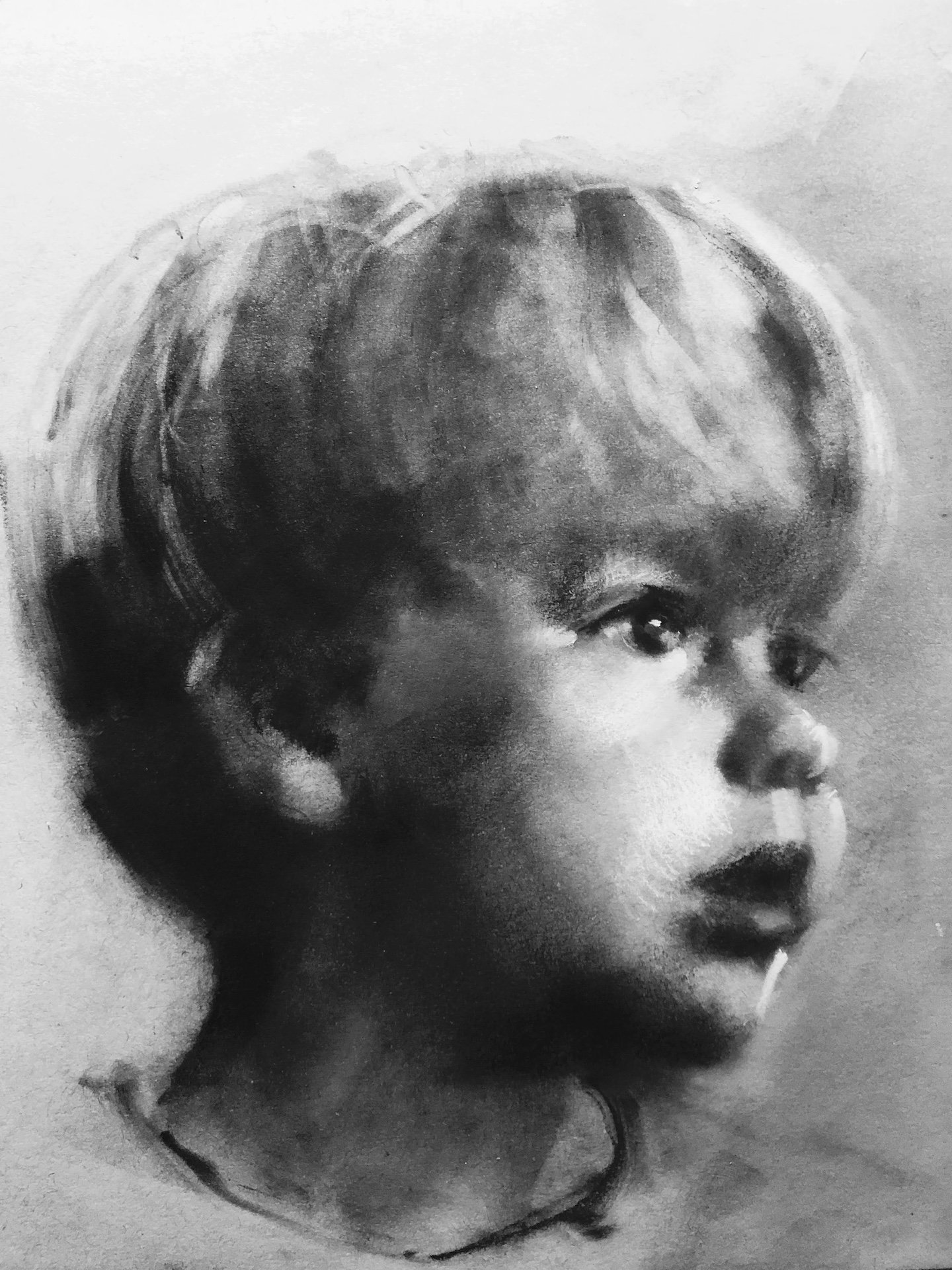Rediscovering Charcoal: Embracing the Imperfections of Art
I recently had the pleasure of completing two charcoal portraits and displaying them in my studio window. It was such a joy to overhear passersby exclaim, “Oh, I know who they are!” as they recognized the subjects. Children, in particular, are the ultimate judges of how well you’ve captured someone’s likeness—always brutally honest and refreshingly direct.
“Locals” Charcoal on toned paper by Don Ripper, 2024
Although I’ve been painting portrait commissions in oil for decades, I only recently began taking commissions in charcoal. Charcoal was never my preferred medium. I struggled to feel confident in my abilities and lacked the motivation to improve.
“Self portrait from a mirror” Don Ripper, 2019
During my foundation year at the Corcoran School of Art, we were completely immersed in charcoal work. I don’t recall a single student who enjoyed it. Day after day, we churned out an average of 50 gesture drawings and at least a dozen longer poses, all on stacks of newsprint. This intense practice spanned an entire year.
Quick sketch in charcoal by Don Ripper, 2020
If you’ve ever considered yourself competent with a pencil, transitioning to charcoal can be a shock. It feels like a step backward, undoing the confident lines and shading that once made it to your mom’s fridge. Charcoal, particularly vine charcoal, is messy—it leaves you looking like a chimney sweep. While I’ve come to embrace the mess as part of my personal style, it’s easy for a drawing to become overly soft, with tones that lack definition. My early attempts often looked dull and lacked control. I wouldn’t dare show them publicly, fearing that Scip Barnhart, the legendary printmaking and drawing professor from the Corcoran, might see them.
“Reesa” Charcoal on toned paper by Don Ripper, 2021
So, I took a 20-year break from charcoal.
After two decades, I’ve come to appreciate the very qualities I once disliked about charcoal. What I saw as flaws—Its inherent “openness” and limitless capacity for change make it particularly well-suited for portraiture. Creating a portrait involves a delicate balance of proportion, tone, and an acute sensitivity to the subtle differences that set one person apart from another. Sometimes you nail it, other times you don't. When it eludes you, that openness to correct your drawing mirrors the fluidity often found in oil painting.
Self portrait, Charcoal on toned paper by Don Ripper, 2021
Kenneth Grahame by John Singer Sargent, 1912
Line, shape, form, tone—repeat these until your subject comes to life. And when needed, don’t hesitate to start again. After all, it’s just charcoal and paper—nothing to be intimidated by. :)
On a final note, there’s something beautifully simple about charcoal as a medium. It relies on just the basics: charcoal, paper, and an eraser. John Singer Sargent famously used day-old bread in place of an eraser, emphasizing the accessibility of this art form. There’s no excuse not to try. If you’re interested in getting started, feel free to reach out, and I’ll happily share a materials list with you!
SEE ALSO: Love Shack in Maine







